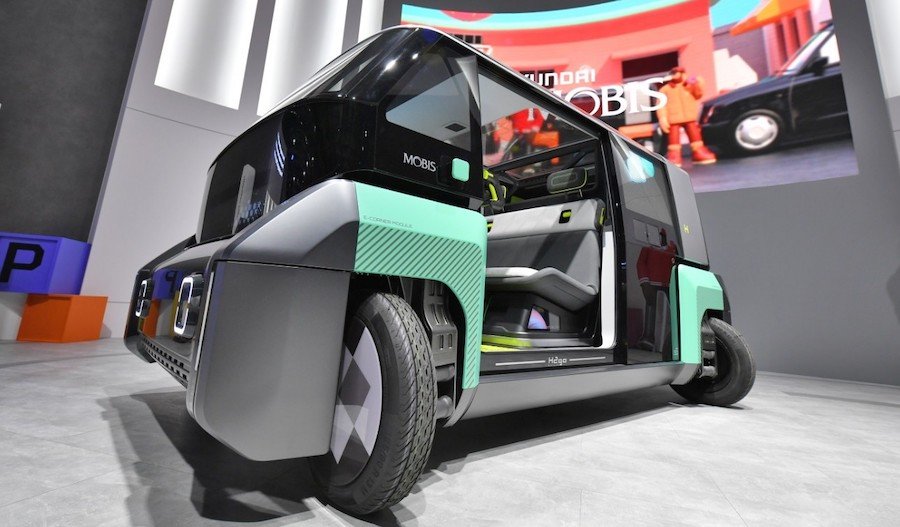Hyundai Is Making a Brand-New System That Helps Cars Move Sideways and Rotate in Place

This new module combines the steering, braking, suspension, and driving systems into one wheel.
Unveiled for the first time in 2018 at the Consumer Electronics Show, the concept of the e-corner integrates a motor, electronic damper control, Brake by Wire, and Steer by Wire technologies in a package that can be installed in each wheel of the vehicle. This eliminates the need for a traditional chassis and central engine, giving EVs four-wheel-drive capabilities.
Since its introduction, the module has been redesigned and perfected for practical applications. Hyundai Mobis also developed an Electronic Control Unit (ECU) for control and has completed the functional testing of its new system.
The most notable aspect of the e-corner module is that it does not require any mechanical connection between pieces. This not only makes changing the wheelbase easier but also provides considerably more flexibility in designing the door's direction and the size of the vehicle.
But Hyundai Mobis is not the only one that's experimenting with next-generation steering systems. General Motors has already announced a four-wheel-steering system that will allow the GMC Hummer EV to move diagonally in a straight line.
Earlier this year, Elon Musk also confirmed that the Tesla Cybertruck is getting rear-wheel steering as well, "so it can do tight turns and maneuver with high agility."
However, compared to the traditional 30-degree rotation, Hyundai's new e-corner module has been improved. It now allows for 90-degree wheel rotation that will help with parallel parking, as well as sideways driving and in-place turning without moving forward or backward.
Hyundai Mobis intends to create a skateboard-type base by 2023, which will include four e-corner modules. Once the platform is complete, the company will pair it with autonomous driving control technology in order to deliver a Purpose Built Vehicle (PVB) mobility solution in 2025.
